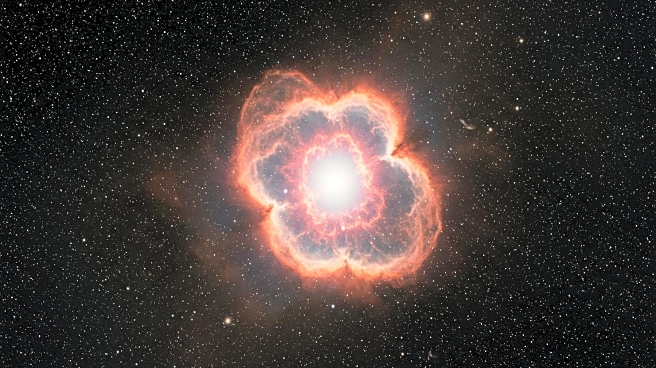What is the story about?
What's Happening?
An international team of astronomers has discovered an ultra-massive white dwarf star formed from the merger of two stars, a rare cosmic event. This discovery was made possible by the Hubble Space Telescope's ultraviolet observations, which revealed the presence of carbon in the star's atmosphere, indicating a violent origin. The white dwarf, named WD 0525+526, is located 128 light-years away and is 20% more massive than the Sun. It is hotter and more massive than other known white dwarfs formed from mergers, with a temperature of nearly 37,000 degrees Fahrenheit. The study, published in Nature Astronomy, marks the first identification of a white dwarf merger through its ultraviolet spectrum.
Why It's Important?
This discovery challenges previous assumptions about white dwarf formation and suggests that such mergers may be more common than previously thought. Understanding these cosmic collisions provides insights into the formation history of white dwarfs and their potential pathways to supernova explosions. The findings could lead to a reevaluation of the prevalence of stellar mergers among white dwarfs, impacting theories on star evolution and the lifecycle of celestial bodies. The research underscores the importance of ultraviolet observations in uncovering hidden aspects of the universe.
What's Next?
The research team plans to extend their study to explore the frequency of carbon white dwarfs among similar stars and identify more merger remnants. This could significantly contribute to the understanding of white dwarf binaries and their role in supernova events. Future observations with Hubble and other telescopes may reveal more 'normal' white dwarfs that are actually products of stellar mergers, further expanding knowledge of cosmic phenomena.
Beyond the Headlines
The discovery highlights the capabilities of the Hubble Space Telescope in advancing astronomical research. It also raises questions about the potential for other seemingly ordinary celestial objects to have extraordinary origins. The study may inspire further exploration into the mechanisms of star formation and the complex interactions within binary systems.
AI Generated Content
Do you find this article useful?















